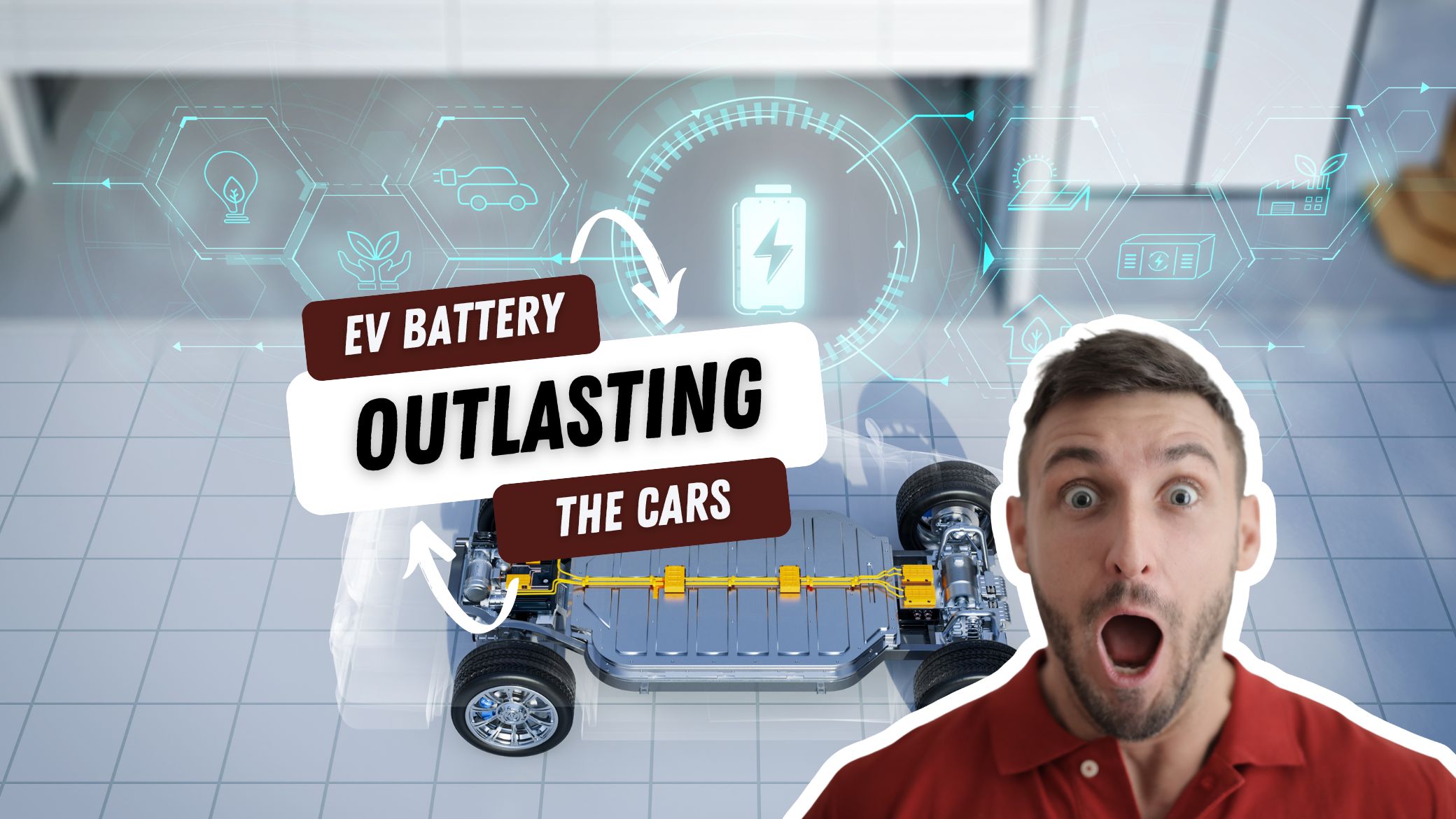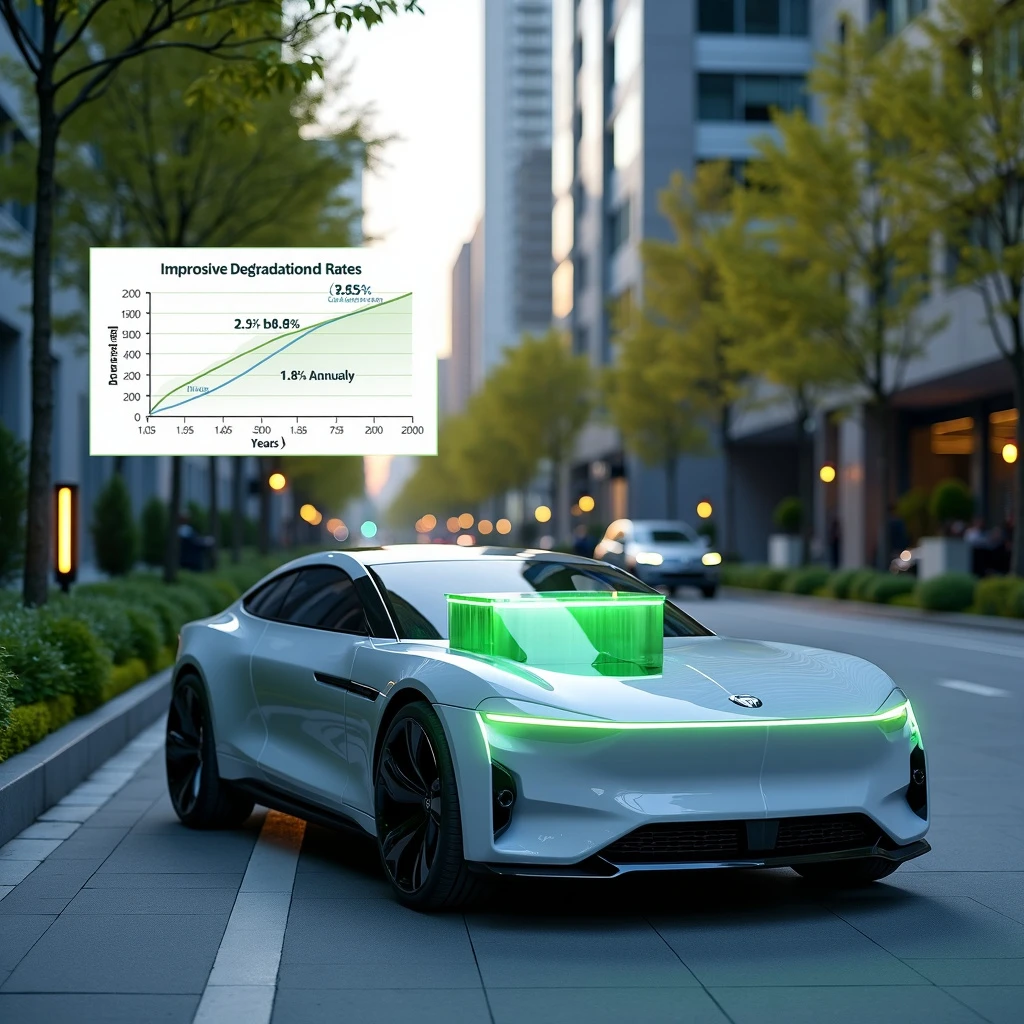A recent study from Geotab has revealed a groundbreaking finding: the vast majority of electric vehicle (EV) batteries are expected to outlast the vehicles they power. This discovery challenges common perceptions about battery life and has significant implications for the future of electric mobility. In this article, we will delve into the details of the study, explore the factors driving this longevity, and discuss the broader impact on the EV market and environmental sustainability.

Surprising Findings
Unexpected Longevity
The study, conducted by a team of researchers, found that EV batteries have a much longer lifespan than previously thought. Contrary to the common belief that batteries degrade quickly, the research indicates that most EV batteries will continue to function effectively long after the vehicle itself has reached the end of its life. This revelation is poised to change the way consumers and manufacturers view electric vehicles.
Methodology and Data
The researchers analyzed data from a large sample of EVs, taking into account various factors such as driving habits, climate conditions, and charging patterns. By using advanced modeling techniques, they were able to predict the long-term performance of EV batteries with a high degree of accuracy. The study’s robust methodology adds credibility to its findings and provides a solid foundation for future research.
Factors Contributing to Battery Longevity
Technological Advancements
One of the key components behind the amplified life expectancy of EV batteries is the fast headway in battery technology. Innovations in materials, design, and manufacturing processes have led to the development of more durable and efficient batteries. For instance, the use of solid-state batteries and improved thermal management systems has significantly enhanced battery performance and longevity.
Improved Battery Management Systems
Modern EVs are equipped with sophisticated battery management systems (BMS) that monitor and optimize the performance of the battery pack. These systems help prevent overcharging, overheating, and deep discharging, all of which can degrade battery life. By maintaining optimal operating conditions, BMS play a crucial role in extending the lifespan of EV batteries.
Real-World Usage Patterns
The study also highlights the impact of real-world usage patterns on battery longevity. Unlike traditional internal combustion engine vehicles, EVs experience less wear and tear on their powertrains. Additionally, regenerative braking systems in EVs reduce the strain on the battery by recovering energy during deceleration. These factors contribute to the overall durability of EV batteries.
Case Studies and Statistics
Tesla Model S
One notable case study involves the Tesla Model S. Data from Tesla owners shows that the battery degradation rate is relatively low, with many vehicles retaining over 90% of their battery capacity after 200,000 miles. This impressive performance underscores the durability of modern EV batteries and aligns with the study’s findings.

Nissan Leaf
Another example is the Nissan Leaf, one of the most popular EVs globally. A consider conducted by Geotab found that the normal battery debasement rate for the Nissan Leaf is almost 2.3% per year. This means that even after 10 years, the battery would still retain around 77% of its original capacity, making it viable for continued use.
Fleet Operators
Fleet operators, such as taxi services and delivery companies, provide valuable real-world data on EV battery performance. For instance, a fleet of Nissan Leafs used by a taxi company in the UK showed minimal battery degradation after several years of intensive use. This real-world evidence supports the study’s conclusion that EV batteries can outlast the vehicles they power.
Read more: Ilika’s Goliath Solid-State Battery: 1000-mile range and can withstand extreme heat
Economic and Environmental Implications
Cost Savings for Consumers
The extended lifespan of EV batteries has significant economic implications for consumers. One of the primary concerns for potential EV buyers is the cost of battery replacement. With batteries lasting longer than the vehicles themselves, the need for costly replacements is greatly reduced. This translates to lower total cost of ownership and makes EVs a more attractive option for budget-conscious consumers.
Environmental Benefits
From an environmental perspective, longer-lasting batteries mean fewer batteries need to be produced and disposed of. This reduces the demand for raw materials such as lithium, cobalt, and nickel, which are used in battery manufacturing. Additionally, it minimizes the environmental impact associated with battery disposal and recycling. By extending the life of EV batteries, we can reduce the overall carbon footprint of electric mobility.
Comparisons with Traditional Vehicles
Longevity
When comparing EVs to traditional gasoline vehicles, one of the key differences is longevity. Internal combustion engine (ICE) vehicles typically require more frequent maintenance and part replacements, such as oil changes, spark plugs, and timing belts. In contrast, EVs have fewer moving parts and require less maintenance, contributing to their longer lifespan.
Maintenance Costs
Maintenance costs for EVs are generally lower than for ICE vehicles. According to a study by Consumer Reports, the average maintenance and repair costs for EVs are about half of those for traditional vehicles over the lifetime of the car. This significant cost saving is a major advantage for EV owners.
Reliability
EVs are also known for their reliability. A study by J.D. Power found that EVs have fewer problems per 100 vehicles compared to ICE vehicles. This reliability, combined with lower maintenance costs, makes EVs an attractive option for consumers looking for a dependable and cost-effective mode of transportation.
Read more: Charging the Future: Toyota’s 10-Minute Charging EVs Are Coming Soon
Addressing Skepticism and Concerns
Validating the Findings
While the study’s findings are promising, some readers may be skeptical about the results. It’s important to note that the research was conducted using a large and diverse dataset, and the findings have been peer-reviewed by experts in the field. The study’s rigorous methodology and robust data analysis provide a high level of confidence in its conclusions.
Real-World Applications
To further validate the study’s findings, real-world applications and case studies can be examined. For example, fleet operators who have been using EVs for several years can provide valuable insights into battery performance and longevity. By sharing these real-world experiences, we can build a more comprehensive understanding of EV battery life.
The Future of Electric Mobility

Technological Innovations
The study’s findings underscore the importance of continued investment in battery technology and innovation. As researchers and manufacturers work to develop even more durable and efficient batteries, the future of electric mobility looks increasingly promising. Breakthroughs in areas such as solid-state batteries, fast charging, and energy density will further enhance the performance and longevity of EV batteries.
Policy and Infrastructure Support
To fully realize the potential of long-lasting EV batteries, supportive policies and infrastructure are essential. Governments and policymakers need to continue promoting the adoption of electric vehicles through incentives, subsidies, and investments in charging infrastructure. By creating a conducive environment for EV growth, we can accelerate the transition to a sustainable transportation system.
Conclusion
The revelation that the endless larger part of EV batteries will outlive the vehicles they control is a game-changer for the electric vehicle industry. This finding addresses one of the major concerns of potential EV buyers and highlights the economic and environmental benefits of electric mobility. As technology continues to advance and supportive policies are implemented, the future of electric vehicles looks brighter than ever.
For more insights and updates on the latest developments in the EV industry, stay tuned to EVtopcars.
Read more: The World’s Largest Electric Container Ship: What Are Its Benefits and Challenges?









Ilika’s Goliath Solid-State Battery: 1000-mile range and can withstand extreme heat
Tesla Model 3 Six-Year Cost of Ownership: saved $20,000 in fuel costs